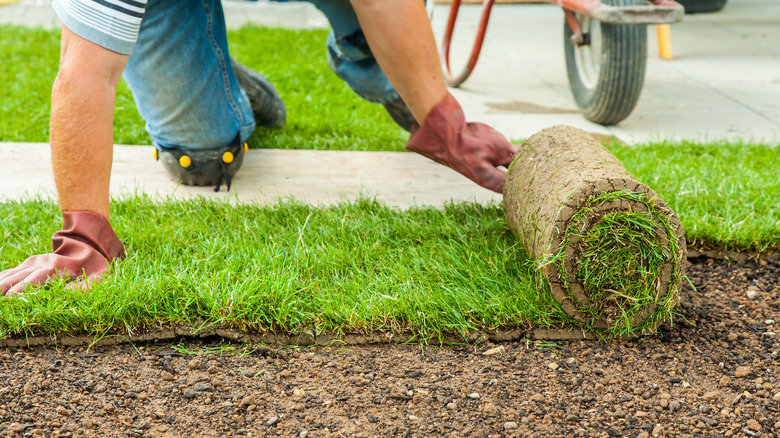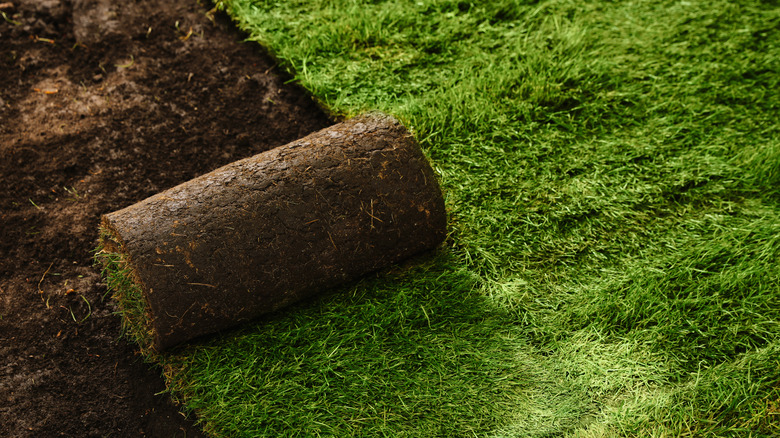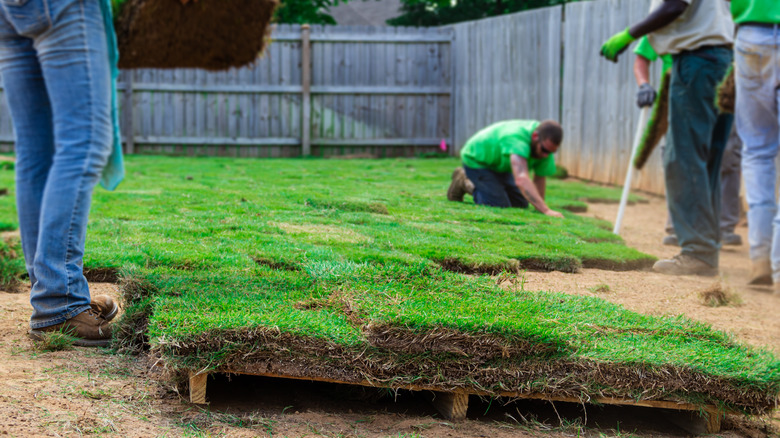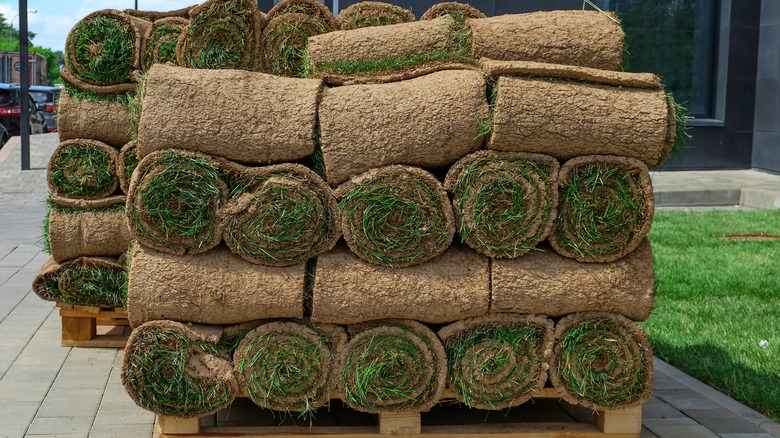How To Install Sod Properly
Homeowners will occasionally face off against the task of laying a new layer of sod across their yard. Whether you're approaching a whole yard replacement or just a transformation in one segment of the lawn, the installation of new sodding is a task that requires both great care and a knowledge of the physical labor involved in getting the job done the right way.
Lawncare is an integral component of homeownership, and Coldwell Banker estimates that landscaping as a broad home improvement category can even create a 100% to 200% return on investment when you decide to sell the property. As a financial tool, a focus on landscaping is incredibly important for creating essential curb appeal and maintaining the underlying value of the asset, but this isn't the only reason to resod a dying lawn.
The yard provides the basis for health and wellness in your home and for every member of your family. Studies consistently show a powerful link between time spent outdoors in nature and enduring mental and physical wellness (via Time). Laying sod the right way is therefore an incredibly important task for any homeowner who is experiencing a downturn in the health of their lawn.
Rake out old grass roots and level the soil
The first step to laying a new sod layer is the removal of old plant material. Dried out or dead roots can stunt the growth of your new sod, making for a tainted start to the new lawn that you intend to set down. Lawn Care Lessons reports that raking dead sections of grass is crucial for homeowners looking to reinvigorate a stymied lawn. This can take many hours if you are resodding the entire yard though.
It's important to go into this process with your eyes on the prize and a firm understanding of the amount of work that will be required to complete the resodding. Order Sod Now estimates that it will take a moderately experienced sod layer around two hours to put down turf over a 700-square-foot area — although this estimate does not include watering, cutting pieces to fit into curves or corners, or the initial raking and leveling tasks.
Raking is a strength-intensive activity as well. This can be an immensely tiring task, but it's also great exercise for those who look at the glass half full! Once you've eliminated old roots from the area, the next step is the leveling process. Using the back of your rake or a shovel, you'll want to brush over the entire area to loosen the dirt and ensure that the whole space provides an even, level plane for the new sod to rest on and integrate with.
Lay the first row of sod against a straight edge
Once your yard is prepared for the new grass layer, you can begin laying pieces of sod across the affected area (or the entire yard). This Old House recommends starting your new lawn against the longest edge of the yard. This might be against a fence, or it could be the edge of the sidewalk that runs along the front of your home. Making use of this straight feature gives you a solid foundation to begin adding row upon row and eventually completing the lawn.
Sod looks and feels like slices of carpet or tiles made of grass. These sections are the top layer of harvested grass that's grown specifically to be replanted in yards across the country (via SodGod). They may come in rolls or sections piled up on a pallet. Regardless of how you purchase sod, the key is in consistency across each row. Eventually, these rows of grass will intertwine and fill in completely, fusing with one another and the soil underneath. But in the early days just after it's laid, the best start you can give your grass is one that places each new row as close to one another as possible to choke out weed growth and establish a tight-fitting grass layer.
Baby the new lawn for at least a week to establish strong roots
This Old House reports that the best way to ensure that your new sod thrives is to stay off of the newly laid installation for at least a week. Sod is a living addition to the landscape of your home, and because of the fragile state that it arrives in, must be used quickly and then left to acclimate to its new environment. SF Gate estimates that a rolled sod delivery under the most optimal conditions will only keep for three to five days before it becomes damaged from the harvesting and transportation processes and begins to die. Sod that's cut into slices and layered enjoys an even shorter timeframe for successful use.
Staying off the lawn will give it time to root and take in the sunlight in your yard. After about a week, the grass will have established itself firmly enough to support minimal weight that comes through light footfall usage. It's best to hold off on mowing the lawn for a while though, especially with a riding mower that weighs far more than a push mower. The Green Pinky suggests that you can mow the lawn as early as two weeks after it's been laid down, but the longer you wait the better.



